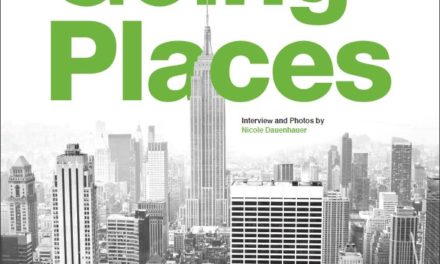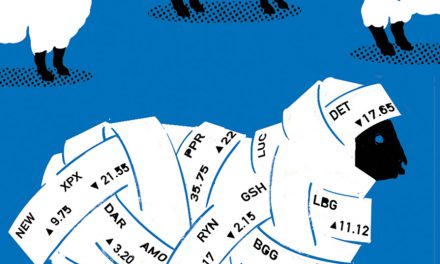
Best Year Yet
To achieve sustainability in your financial planning practice, you have to ask yourself some tough questions: Should we further outsource our money management for clients? How do we compete in an environment where clients are relying more on technology? Does charging fees based on AUM really work for younger clients?
To view the full article please register below:
Best Year Yet
I’m not going to lie … 2018 was a great year for my practice by adding sustainability in investment portfolios. I nearly doubled my AUM, developed relationships with several new centers of influence, secured speaking opportunities in front of hundreds of new prospects and made significant technology upgrades that enhance both the efficiency of our office and our ability to provide superior client service. Yes, by all accounts, it was a great year.
Is Our Sustainable for the Long Term?
Over these past few months, I have spent a significant amount of my time thinking about how to capitalize on a great year and really take our business to the next level. For all of the positives that came out of 2018, there are some broader realities that we are trying to tackle. In a world that is becoming more focused on fiduciary responsibility, should we further outsource our money management for clients? How do we compete in a business environment where clients rely less on personal interaction and more on what they see on their screen? Does the old model of charging fees based on AUM really work for a younger generation of clients? These are all questions that lie at the very center of whether our business is sustainable for the long term and well positioned to tackle new challenges.
The answers to these questions and others can be found in the process that was used to make major decisions in 2018. I talk a lot about habits with my clients. I stress that it is not the amount of money they are saving that will ultimately change their financial fortunes, but the habits they develop so that, when they make more money or have more disposable income, they will already have in place the habits to help them make good decisions. As a business owner, I have to practice what I preach and use our good habits to help find the answers to their financial planning questions.
Ask Yourself Some Tough Questions
When I think about what it took for us to make some of the changes we made, a few words and phrases come to mind. First, we had to be “open minded” to the idea that we didn’t have all the answers, and that the systems and software we had been using for more than two decades were not the best or only solution. We had to be willing to listen and willing to accept that just because we had always done something a certain way before did not mean it was the best way going forward.
We also had to be “diligent” in order to do all of the research needed to make the best decisions possible. We had to look under every rock, explore every opportunity and listen to every wholesaler in order to gather the information we needed to make the best decisions for our practice. Exploring every viable option meant seeking referrals from fellow advisors, technology partners and asset managers. Only then could we actually look our clients in the eyes and say we made the best decision for them and the best decision for us.
Finally, and maybe most importantly, we had to be “fearless.” We had to be willing to change, to disrupt our workflow and to take that leap to try something new. I am not going to lie—it was and is scary. Clients ask questions for which you may not have the answers. Transitions can go, well, not as smoothly as you intend, despite your best efforts. It is stressful and it is hard … but, it is worth it.
Think about how many times we tell our clients that one of our recommendations will pay off in the long run—that we know it is hard now, but that they will not regret it down the road. Well, shouldn’t we take our own advice? Shouldn’t we take the momentum we have built in good years and use it to propel us forward for the long term? For me, the answer is yes.
Finding the Answers
So, what are we going to do to answer the questions I mentioned at the beginning of this post? Well, first, we are going to explore the roster of third-party money managers to see how we can make that aspect of our business more efficient. Let’s face it. Almost none of us are in this business because of our ability to beat the market. We are not at our best when we are sitting in front of a computer screen pushing buttons on buys and sells. I know I am not. I want to be in front of my existing and new clients. In order to do that, I need to take the chains off and be willing to let go.
Next, I am going to explore technology options that help bring the customer service experience that my clients get in person to their homes. It is all on the table: video conferencing, client portals, Web site upgrades, podcasts and more.
Finally, I am going to continue my research on the best way to develop new client relationships. AUM is fine, but if it is the only tool in your box, then how are you going to reach clients who have the capacity to build wealth, yet have nothing to manage at the current moment in time? What about Millennials who are contributing to their workplace retirement plan and not doing much else? This is an area that requires us all to think outside the box. I believe passionately that the advisory practices that exist in 10 years’ time will be those that solve this problem. We have to look at subscription models, flat fees, retainers and other models that help to make our services accessible. We believe firmly that the best long-term clients are the ones who are willing to engage with you early on. You can build loyalty and trust in a way that makes them very unlikely to ever leave your service. However, if you force your circular-type clients into the square peg you have always used for financial planning, you will not be the one smiling in the end.
I have a favorite anonymous quote on impact bias that states, “People overestimate the value of current pleasure and underestimate the hurt caused by future pain.” I use this quote in my client conversations in order to encourage them to stretch themselves. And, for the purposes of this article, it is my closing argument. Doing things the way we have always done them will get us nowhere. Being resistant to change only means that your competitors will get ahead of you. Mortgaging your future to stay happy now will only make tomorrow more of a struggle. So do something about it. Whether 2018 was your best year yet, or just another year, it is time to build momentum. Embrace the future and stretch yourself. Be your best client and, hopefully then, we can enjoy this ride together.
See referenced disclosure (2) athttps://blog-dev.americanportfolios.com/disclosures/












